- Pakistan’s strength lies in weaving its diverse cultures into a single, harmonious national identity
On 14 August 1947, Pakistan unfurled its green and white flag, stepping gracefully onto the global stage as a nation born of vision, faith, and sacrifice. The day marked not only political freedom but also the awakening of a people determined to shape their destiny.
Rooted in the rich soils of the Subcontinent, Pakistan carries within it centuries of tradition, culture, and values, tied together by the golden thread of Islam. The idea of a separate homeland was more than political — it was a heartfelt desire for dignity, security, and the freedom to nurture our distinct identity. Led by the Muslim League under the wise guidance of Quaid-e-Azam Muhammad Ali Jinnah, the dream of Pakistan became reality.
From the very start, our land has been blessed with a kaleidoscope of cultures—Punjab’s vibrant hospitality, Sindh’s soulful heritage, Balochistan’s resilient pride, Khyber Pakhtunkhwa’s fierce loyalty, and the Bengal of the early years with its poetic grace. Together, these regions formed the living fabric of Pakistan. Yet, weaving this diversity into a unified national identity has always been an ongoing journey.
Quaid-e-Azam’s vision was clear in his historic 11 August 1947 speech:
“You are free; you are free to go to your temples, you are free to go to your mosques or to any other places of worship in this State of Pakistan.” These words remain timeless — reminding us that unity lies not in uniformity, but in respecting each person’s beliefs, languages, and traditions.
A heritage that bridges worlds
Pakistan’s soul is undeniably tied to Islam, yet its cultural roots run deep in the Subcontinent’s soil. Our music carries echoes of the Sufi saints, our cuisine shares the fragrant spices of ancient trade routes, and our art draws from centuries-old craftsmanship. While we share common threads with neighbouring lands, our identity is uniquely ours—formed through the spirit of resilience, faith, and an unyielding commitment to justice.
This dual heritage gives Pakistan a rare strength. We are a nation that can converse with the Arab world in shared faith and values, yet we also carry the profound creativity and warmth of South Asian civilisation. This is not a contradiction—it is a gift. In a world that often forces people into narrow boxes, Pakistan’s history teaches us that it is possible to be proudly Muslim and richly multicultural at the same time.
Unity through diversity
In our earliest decades, some voices feared that regional languages and traditions might divide us. But history has shown the opposite — our diversity is our strength. The lively rhythms of Sindhi Ajrak, the poetry of Baloch ballads, the embroidered artistry of Chitrali caps, and the regal elegance of Punjabi folk dances all carry the heartbeat of Pakistan.
True unity is not built by erasing differences, but by celebrating them as part of a shared story. Our identity should be as vast as the Indus River, embracing all who dwell along its banks. Urdu, our national language, remains a unifying bridge, while our regional languages — Punjabi, Sindhi, Pashto, Balochi, Seraiki, Hindko, Kashmiri, and others — must be cherished as expressions of our people’s souls.
Shaping the future
There were times when differing visions — whether leaning towards an Islamic ideological state or a more secular model—caused debates. Yet, the essence of Pakistan lies in harmonising faith with inclusivity. Islam itself advocates justice, equality, and compassion, values that can help knit together the many strands of our national fabric.
In embracing this balance, we can overcome the tendency to borrow identities from elsewhere and instead cultivate one that reflects the truth of our land. Pakistan’s historical figures—from Sufi saints to national freedom heroes — remind us that courage, sacrifice, and love for humanity are the cornerstones of greatness.
Our education system has a special role in shaping this understanding. It must teach young Pakistanis that our homeland is home to all its citizens — Muslims, Hindus, Sikhs, Christians, and others — each contributing to our collective progress. By including regional histories, local heroes, and indigenous art forms in our curricula, we can instil a deep pride that does not erase difference but draws strength from it.
A call to national revival
Today, Pakistan stands at a point where it can turn its diversity into its greatest national asset. The challenges of the past need not dictate our future. We have already seen how unity, when grounded in mutual respect, can power remarkable achievements — whether in cricket stadiums, disaster relief efforts, or our shared celebrations of Independence Day.
To fully realise this vision, our national policies must reflect cultural clarity. Protecting regional languages, supporting local arts, and promoting interfaith understanding are not secondary to development — they are the foundation of a confident, forward-looking Pakistan. Our identity should be one where no citizen feels invisible, where every cultural expression finds its place under the green and white flag.
The revival of Pakistan’s true spirit will require political will, social harmony, and a reaffirmation of our founding principles. The lesson from our past is simple yet profound: when we embrace the richness within, we are unshakable.
As we move ahead, let us remember that the journey to defining our national identity is not about choosing one colour for our flag’s fabric — it is about weaving all our colours into a single, beautiful pattern. That is the Pakistan envisioned in 1947, and that is the Pakistan we can build today — proud, inclusive, and radiant with hope.



